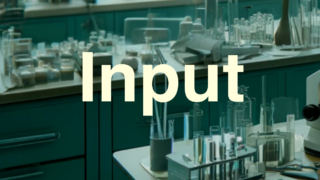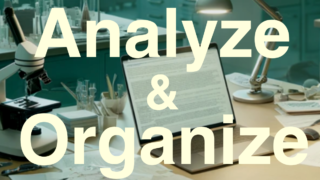As the number of new papers in the fields of life sciences and clinical medicine continues to grow, it's impossible to keep up with everything. However, you'll want to stay on top of topics within your own research and specialized areas.
This article summarizes websites that offer email notification services, allowing you to set targets and follow the latest papers.
Since the features and tendencies of each site can be surprisingly different, I hope this information is helpful.
You can read the previous article here ▼
Classification of Email Notification Services
First, paper alert email notification services can be broadly categorized into two types:
- Journal-based notification services
- Table of contents and new paper notification services offered by individual academic journals.
- Cross-database alert services
- Services that allow you to set alerts based on search queries, keywords, or authors across multiple journals and databases.
You'll likely choose one over the other depending on your objective.
In short, if you want to get a rough idea of the latest trends, journal-based notifications are recommended. If you want to follow a specific research field, cross-database notifications are the way to go.
Let's take a closer look at each one.
Journal-Based Notification Services
If you want to get a general overview of trends in a field, journal-based notification services are a good choice.
For example, a cardiologist might register for email notifications from journals in their specialty, such as Lancet Cardiology and JAMA Cardiology. The drawback here is that the email formats for each journal can be different, making them difficult to read.
If this is a problem, using a service like JournalTOCs will send you emails in a consistent format, which is very convenient.
Let's look at some specific services.
1. Official Email Notification Services from Journals
This method involves using the alert services provided by major journals like NEJM, Lancet, Nature, Science, and JAMA. Most major journals, such as the ones listed below, have their own email alert services, which you can receive by creating an account.
Examples of major journals:
- NEJM: https://www.nejm.org/
- The Lancet: https://www.thelancet.com/
- Nature: https://www.nature.com/
- Science: https://www.science.org/
- JAMA: https://jamanetwork.com/
What you can do with these alerts:
- Notifications for the new issue's table of contents (TOC).
- Notifications for articles filtered by specific fields or topics.
- Notifications for Early View (online pre-publication) papers.
- Notifications highlighting editorials or review articles.
Features and considerations:
- Only high-quality, carefully selected papers based on the journal's editorial policy are included.
- Notifications are sent about once a week, making them easy to manage.
- Even without a journal subscription, you can still get information at the abstract level (some journals like JAMA are occasionally readable without a subscription).
While the quality and content are guaranteed, the number of journals is limited, so you should be aware that you might miss information relevant to your research field.
2. JournalTOCs
JournalTOCs is a service that sends you the latest TOC (Table of Contents) information for each journal via email. You need to register for an account, but it's a convenient service that delivers TOC information from multiple journals in a single format.
However, for some reason, the emails have never been delivered to the address I use. It's possible that this service doesn't work well with free email providers.
Official website: https://www.journaltocs.hw.ac.uk/
Overview:
- A UK-based service that provides free TOC information for approximately 40,000 journals. It is operated by Heriot-Watt University.
What you can do with this alert:
- Email notifications for the latest TOC of a specific journal.
- Consolidated email delivery that combines multiple journals.
Features and considerations:
- You can centrally manage academic journals from a wide range of fields.
- It saves you the trouble of visiting individual journal websites.
- There may be a time lag in updates for some journals.
The services discussed so far are all journal-based. If you want to check the latest developments in your research more specifically and comprehensively, the cross-database alert services below are recommended.
Cross-Database Alert Services
Use these services when you want the latest information on a specific field, author, or paper, rather than general trends. While services like Web of Science offer similar features, they often require a subscription. Here, I'll introduce services that only require a free account registration.
For example, if you're researching a particular field and planning to submit a paper in the future, you'll definitely want to know if unexpected research results or similar studies have been published before you submit. Not being aware of this could easily lead to a disastrous rejection. Be sure to use these services (this is a reminder to myself, too).
1. PubMed (My NCBI)
Official website: https://pubmed.ncbi.nlm.nih.gov/
My NCBI: https://www.ncbi.nlm.nih.gov/myncbi/
Overview:
- Provided by the U.S. National Library of Medicine. It's the standard database for life sciences and clinical medicine.
What you can do with this alert:
- Save advanced search queries (MeSH, Boolean operators, publication year, journal name, etc.) and have them delivered daily, weekly, or monthly.
- You can also create author/journal alerts by including author or journal names in your search query.
Features and considerations:
- The most reliable and accurate service for medical research.
- You can set detailed preferences for the number of emails and delivery days.
- Since preprint inclusion is limited, you might want to supplement it with Google Scholar for timeliness.
- It does not support cited-by alerts or author alerts.
Compared to the databases introduced below, its search query customization is very high. It also includes the functionality of the journal-based notification services mentioned earlier, so this alone can be sufficient.
Nowadays, you can probably ask an LLM to create most search queries for you, so it's a good idea to create the best search query for your needs with the help of these resources.
Also, since this service focuses primarily on biomedical science, it may not be useful for all fields. As with the other databases, it's best to prioritize the one you use most often.
2. Google Scholar
Official website: https://scholar.google.com/
Overview:
- An academic search engine operated by Google. It indexes everything from journal articles to preprints and theses.
What you can do with this alert:
- Create keyword alerts from the search results page.
- Create author alerts from an author's profile.
- Create cited-by alerts from the "Cited by" list page.(Note: Alerts are sent instantly whenever a new paper is registered. You can't adjust the frequency.)
Features and considerations:
- It's incredibly easy to use and comprehensive, but it also has a lot of noise, meaning it includes low-quality literature.
- You can't specifically limit by journal name; you can only use a quote-enclosed keyword like
"Journal Name"as a pseudo-designation. - If you feel the number of notifications is too high, you'll need to adjust by narrowing down your keywords.
While it's highly comprehensive, it can include non-paper information, and the keyword-based filtering is not as advanced as PubMed's search queries.
3. Scopus
Official website:https://www.scopus.com/
Overview:
- A database operated by Elsevier, a major academic publisher.
What you can do with this alert:
- Register an alert for a search query created with Advanced Search (daily, weekly, or monthly, with the ability to specify the day of the week).
- Create author alerts from an author's profile.
- Create cited-by alerts for specific papers.
Example search query (journal-specific):
SRCTITLE("Journal of Neuroscience") AND ABS("Parkinson") AND PUBYEAR > 2021
= Papers in the Journal of Neuroscience published after 2011 that include "Parkinson" in the abstract.
Features and considerations:
- You can perform precise searches with rich field specifications like
TITLE,ABS,KEY, andSRCTITLE. - It integrates with citation metrics (h-index, etc.), making it useful for research evaluation.
Like PubMed, this service also supports advanced search queries and offers flexible alert frequencies. It also supports cited-by alerts, which PubMed does not. However, I personally find the UI a bit difficult to read.
Scopus covers a broader range of fields than PubMed, so you should choose based on the journals and topics in your field.
4. Semantic Scholar
Official website: https://www.semanticscholar.org/
Overview:
- A free search engine operated by the Allen Institute for AI. Its main selling points are AI summaries and similar paper recommendations. It is interdisciplinary.
What you can do with this alert:
- Notifications for new papers by a specific author.
- Notifications for when a specific paper is cited.
- Research Feed: The AI recommends similar papers based on the papers you've saved and sends you an email.(You cannot set alerts based on free keywords or topics.)
Features and considerations:
- The AI recommendations can help you find related literature you might have otherwise missed.
- The accuracy is somewhat rough in the medical field, so you may need to supplement it with PubMed for more specialized needs.
- Since you can't create search-query-based alerts, it's not suitable for comprehensively tracking a topic.
You can save papers you're interested in to your library and set up cited-by alerts for all of them at once, as well as author alerts. The Research Feed feature, which automatically provides related papers based on your saved papers, is also convenient. However, perhaps because my field is a niche one, I haven't received many recommendations even after adding several papers.
It's a great tool if you only need author or cited-by alerts.
Summary Table
Here's a table summarizing the four services mentioned above.
| Semantic Scholar | Google Scholar | PubMed (My NCBI) | Scopus | |
| Alert Targets | Author / Cited-by / Similar Papers (Research Feed) | Keywords / Author / Cited-by | Keywords / Author / Journal / MeSH | Keywords / Author / Journal / Cited-by |
| Search Query Flexibility | Not flexible (doesn't support free search queries) | Yes (simple keyword search) | High (supports Boolean operators, MeSH, and advanced filters) | High (advanced syntax with field specifications and Boolean operators) |
| Journal Name Specification | Not possible (topic function doesn't support alerts) | Mostly not possible (can search for "journal name" as a keyword) | Formal journal name specification is possible | Clear specification with SRCTITLE() is possible |
| AI Recommendations | Yes (learns from your Research Feed) | No | No | No |
| Compatibility with Medical/Life Sciences | Somewhat weak (interdisciplinary, not specific) | Average (has noise, lacks precision) | High (specializes in biomedicine) | High (many medical journals, allows for precise filtering) |
| Notification Method & Frequency | Email (frequency cannot be specified) | Email (frequency cannot be specified) | Email (daily, weekly, or monthly) | Email (flexible, including daily, weekly, and monthly) |
| Cited-by Alert Function | Yes (notifies when a specific paper is newly cited) | Yes (notifies about citations for your own or any paper) | No | Yes (can set cited-by alerts for specific papers) |
As a side note, I recently created a Chrome extension that lets you jump directly from a paper's page to Semantic Scholar or Google Scholar, which makes creating alerts easier. I hope you find it useful.
Special Mention: EvidenceAlerts (for Clinicians)
This is a special mention for clinicians, but there's a fantastic service that notifies you of expertly curated, evidence-based papers.
Official website: https://plus.mcmaster.ca/EvidenceAlerts/
Overview:
- An evidence alert service exclusively for clinicians, operated by McMaster University. It supports the practice of Evidence-Based Medicine.
What you can do with this alert:
- Expert-screened delivery of clinically important papers.
- Prioritizes high-evidence papers like Cochrane Reviews, RCTs, and systematic reviews.
- Customized delivery by specialty (internal medicine, surgery, pediatrics, etc.).
- Includes a concise summary of the paper's clinical significance.
Features and considerations:
- Prevents information overload with carefully selected deliveries that prioritize clinical practicality.
- Does not include basic research papers; it's limited to clinically applicable findings.
- Primarily for healthcare professionals such as doctors, nurses, and pharmacists.
- The frequency is moderate and designed not to disrupt daily work.
This is highly recommended, separate from research and trends.
How to Use Google Apps Script for Efficiency
If you're using multiple services, reading all the alert emails can become a hassle. So, I created a Google Apps Script to automatically extract emails into a format that can be easily fed into a large language model (LLM). This script works with Gmail.
Specifically, it performs the following steps:
- Gets the full text of emails with specific subject lines from Gmail.
- Extracts the full email text.
- Outputs the combined text to a Google Doc.
Then, you can simply copy and paste it into an LLM like GPT, which will summarize it nicely while preserving the link structure.
While I could have connected the LLM directly to Gmail using services like Claude or Gemini, I didn't want to give an all-powerful LLM direct access to something as private as my emails. That's why I chose this method of simple automatic processing with a script.
Here's how to set it up: First, open Google Sheets (or create a new document in Google Drive).
Then, go to "Extensions" and select "Apps Script."
Google Apps Script will open. Paste the following code into code.gs.
JavaScript
// ==================================================
// ▼▼▼ Configuration area (specify subject lines here, enclosed in quotes) ▼▼▼
// ==================================================
const subjectPatterns = [
'subject:"New articles from EvidenceAlerts"',
'subject:"Read our new Online First articles"'
];
const searchDays = 7;
// ==================================================
/**
* Function called when a user accesses the web app URL.
* Displays an HTML file named index.html.
*/
function doGet(e) {
return HtmlService.createHtmlOutputFromFile('index')
.setTitle("Paper Email Summarizer Tool");
}
/**
* Main processing function called from the HTML button.
* Saves the extracted emails to a Google Doc and returns its URL.
*/
function runEmailExtraction() {
try {
const subjectQuery = `{${subjectPatterns.join(" OR ")}}`;
const timeQuery = `newer_than:${searchDays}d`;
const searchQuery = `${subjectQuery} ${timeQuery}`;
const dateString = new Date().toLocaleString('ja-JP');
const docTitle = `Paper Email Summary (${dateString})`;
const newDoc = DocumentApp.create(docTitle);
const docBody = newDoc.getBody();
docBody.appendParagraph(docTitle).setHeading(DocumentApp.ParagraphHeading.TITLE);
docBody.appendParagraph(`Execution Time: ${dateString}`);
docBody.appendParagraph(`Search Query: ${searchQuery}\n`);
docBody.appendHorizontalRule();
const threads = GmailApp.search(searchQuery);
if (threads.length === 0) {
docBody.appendParagraph('No emails matching the specified criteria were found.');
return {
success: true,
message: 'No target emails were found.',
url: newDoc.getUrl()
};
}
threads.forEach(function(thread) {
const messages = thread.getMessages();
messages.forEach(function(message) {
const subject = message.getSubject();
const from = message.getFrom();
const date = message.getDate();
const body = message.getPlainBody();
docBody.appendParagraph(subject).setHeading(DocumentApp.ParagraphHeading.HEADING2);
docBody.appendParagraph(`Sender: ${from}`);
docBody.appendParagraph(`Received Date: ${date}`);
docBody.appendParagraph("\n" + body + "\n");
docBody.appendHorizontalRule();
});
});
// If successful, return a success message and the document URL.
return {
success: true,
message: `✅ Processing complete! ${threads.length} emails were found.`,
url: newDoc.getUrl()
};
} catch (error) {
// If an error occurs, return the error message.
return {
success: false,
message: `An error occurred: ${error.message}`
};
}
}
After you've pasted the code, change the subject lines in the configuration area to match the emails you want to extract. Alert emails usually have a fixed subject.
JavaScript
const subjectPatterns = [
'subject:"Put the subject of your email here"',
'subject:"If you have multiple, put them here"',
'subject:"And here, if you have more"'
];
const searchDays = 7;
The searchDays value at the end allows you to specify the number of recent days to search, so feel free to change this number.
Then, just click "Run."
This will extract emails with the specified subjects from the Gmail account you're currently logged into.
The URL of the Google Document will be output at the bottom of the screen. Copy and paste it to open the document.
The full text of the extracted emails will be there. Simply copy it and paste it into an LLM to have it summarized. If you ask it to preserve links, it will display them while keeping the links intact, as shown below.
Pasting it into an LLM is great because you can then ask for more details about anything that interests you. You can deepen your knowledge on specific terms or content on the spot (while always being cautious of hallucinations, of course).
Summary
- Journal-based services are suitable for reliably catching important journals and efficiently collecting high-quality papers. They're ideal for getting a general overview of trends in a field.
- Cross-database services are strong for detailed tracking of a specific research field or author. They offer comprehensive coverage across topics and flexible search conditions.
The basic way to choose between them is:
- For specialization, use PubMed; for comprehensiveness, use Google Scholar.
- If you have an institutional subscription, Scopus is the most feature-rich.
- Keep up with important journals using official alerts or JournalTOCs.
- For clinicians, EvidenceAlerts is highly recommended.
- If managing emails becomes a chore, use Google Apps Script for automation.
It's a good idea to start with a few alerts and add more as needed.
This article focused on email notifications, but in the next one, I'll briefly look at methods using RSS feeds (a feature that notifies you of website updates).









コメント